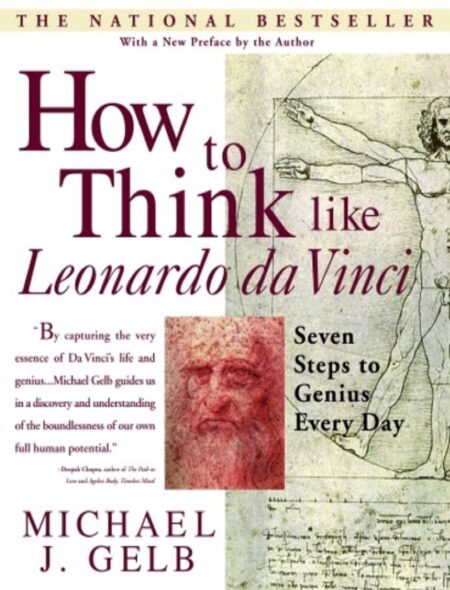STRENGTH SENSEI BOOKSHELF
How to Think Like Leonardo da Vinci
The Vitruvian Man was drawn by the Italian scientist, engineer, sculptor, architect, inventor, and artist Leonardo da Vinci in the 14th century. The Vitruvian Man represents a man’s ideal body proportions and is frequently used in health and fitness publications. Leonardo da Vinci was a genius, and his work inspired countless innovative thinkers to come, including Charles R. Poliquin.
Many of Da Vinci’s ideas on expanding your creativity and achieving more from life are detailed in Michael J. Gelb’s book, How to Think like Leonardo da Vinci. Gelb’s promise is to show you have to use Da Vinci’s ideas to help you excel in the following areas:
- Problem-solving
- Creative thinking
- Self-expression
- Enjoying the world around you
- Goal setting and life balance
- Harmonizing body and mind

How to Think like Leonardo da Vinci was first published in 1998, and the Strength Sensei enjoyed this book so much that he invited Gelb to give a workshop at his facility. He encouraged many of his colleagues to attend, including sports medicine doctor Ken Kinakin of SWIS. Kinakin said the workshop was limited to just ten people and cost $1,000. Kinakin said Gelb taught the group how to mind map and began with the promise, “I’m going to teach you how to get over failure,” a process he told the group starts by understanding that you “emotionalize your failure.”

Gelb breaks down Da Vinci’s approach to harnessing your brain power into seven principles, as follows:
Principle #1. Curiosita: The Quest for Continuous Learning
Principle #2. Dimostrazione: Test Knowledge Through Practical Experience
Principle #3. Sensazione: Constantly Sharpen the Senses
Principle #4. Sfumato: Be Comfortable with Ambiguity
Principle #5. Arte/Scienza: Balance Science and Art, Logic, and Imagination
Principle #6. Corporalita: Develop Poise – the Balance of Body and Mind
Principle #7. Connessione: Maintain a Big Picture Perspective
Take Principle 1. Curiosita, for example. Da Vinci believes everyone is curious, but to benefit from this trait requires developing the ability to “ask great questions.” Some of the practical tools to accomplish this are keeping a journal, brainstorming questions and then determining which are the most important to you to have answered, developing a theme to guide you through the day, setting aside time each day to contemplate, and engaging in “stream of consciousness” writing daily. And that’s just one principle!
British art historian Kenneth Clark said this about Leonardo da Vinci, “Undoubtedly the most curious man who ever lived. He wouldn’t take Yes for an answer.” Do your brain a favor by purchasing a copy of How to Think like Leonardo da Vinci and see what you can accomplish in all areas of your life! (TSS)
[You can purchase How to Think like Leonardo da Vinci by Michael J. Gelb’s in hardback, paperback, Kindle, and audio versions through Amazon.com.]
